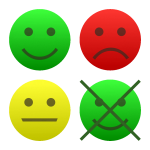Publication Bias: An Editorial Problem?
A blog challenging the idea that publication bias mainly occurs at editorial level, after research has been submitted for publication.
Key Concepts addressed:Details
This blog explains the issue of publication bias in research (where studies reporting positive results – i.e. studies reporting a difference between the tested intervention and a comparison intervention – are more likely to be published than studies reporting negative results). It describes some of the issues caused by publication bias (e.g. overestimating the benefits of an intervention). The blog particularly focuses on the issue of publication bias at the level of the editing process. That is, once a paper has been submitted for publication, the peer review process and editorial decision-making may favour the publication of studies with positive results. The blog then describes a study that sought to investigate whether there is evidence of publication bias at the editorial level. The main finding of the study is that, once submitted to a journal, manuscripts reporting positive results were not more likely to be published. Publication was associated with larger, multi-centre studies with more than 100 participants, and with submission to a specialty, rather than a general, journal. The blog author discusses limitations of this study and then concludes with a take home message: publication bias may mainly occur before manuscripts are submitted to journals. Read the blog
Students 4 Best Evidence (S4BE) is a growing network of students from around the world, from school age to university, who are interested in learning more about evidence-based healthcare (EBH). The network is supported by the UK Cochrane Centre. In addition to the website, the S4BE has a Facebook group and Twitter feed. For more information, read Selena Ryan-Vigs blog which introduces Students 4 Best Evidence.


